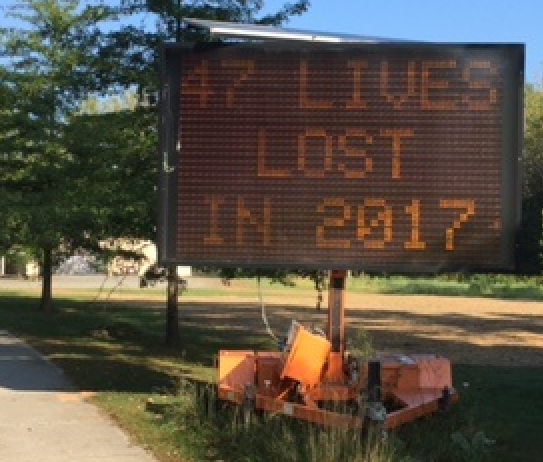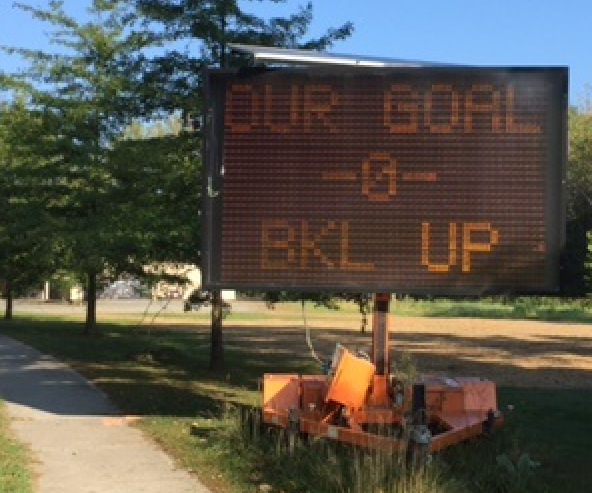

What's New

Words of Wisdom
52
cards and 15 activities to spark conversations and make sense of learning.
Learn more HERE.
What We Do
The Firefly Group helps people make sense of what they learn and experience.
Whether facilitating a group for better decision-making, keynoting a conference, leading a training, or writing an instructional design, we use novel methods that engage, spark creativity, and produce memorable results.
 If
this sounds like a good direction for your organization, let's talk about
how we might collaborate! Please give me a call (802.257.7247) or send an
. - Brian
If
this sounds like a good direction for your organization, let's talk about
how we might collaborate! Please give me a call (802.257.7247) or send an
. - Brian
 Your ETR (Estimated Time to Read): 10 minutes Your ETII (Estimated Time to Implement Ideas): 5 weeks |
What
can you teach with a eight washers tethered to a string?
Watch my video and find out!
October
2017
The Ascendency of Redundancy
|
Say
It Quick |
Discoveries bits of serendipity to inspire and motivate |
Ideas fuel for your own continuous learning |
Activities tips and tricks you can try today |
|
Open for Business? Mixed messages that thwart progress |
Signs of Confusion - Words that don't make sense |
Repetition Doesn't Equal Understanding - Saying it once is enough |
Practice Clarity - Feelings, thoughts, and wants |
I have often said that a short message can be more effective than a lengthy one. But sometimes brevity leads to ambiguity and misunderstanding. See some examples of short, confusing messages and gain skills in avoiding them beginning with this story in exactly 99 Words.
Open for Business?
Savoring early morning coffee and the ocean view from my booth in Breakers Restaurant at the Ashworth Hotel, I was startled by a loud tapping on the front door. Someone wanted to get in for breakfast. Looking around the deserted restaurant, I called for the cook to open the door.Here it was 30 minutes after "opening" and the front door was still locked. You'd think someone would have checked - especially since they'd had to unlock the side door from the hotel for me earlier!
Oh, the things we do that unintentionally thwart our own progress!
Signs of Confusion
Communication has been on my mind lately: What makes for a good message, how
we insure our ideas have been heard, and why we seem to miss the mark so often.
Whether in the news, on the phone, through social media, or face-to-face, we who have the greatest variety of communication of all the planet's creatures still have trouble getting it right.
But rather than become overwhelmed by the big picture, my discovery for this month is a small collection of signs that I've stumbled upon - and been tripped up by over the last few weeks. They all caught my attention and made me think.
 TRUCKS
DO NOT HIT FENCE
TRUCKS
DO NOT HIT FENCE
This sign was on private property along a narrow street in Provincetown, Massachusetts. Is someone thinking that trucks, or truck drivers, would choose to hit the fence? Does it mean it's alright for other vehicles to hit the fence? Perhaps (and this is a stretch) it is a simple statement that trucks do not, as a rule, hit the fence. Only after closer inspection can you see the small graphic that could be a video camera on the sign indicating this is actually a threat. Violators will be filmed, identified, and punished. If that's the intension, a better message would be SECURITY CAMERAS IN USE.
 47
LIVES LOST IN 2017
47
LIVES LOST IN 2017
OUR GOAL -0- BKL UP
Erected by the Vermont Highway Department, this sign flashes between the two parts of its message. The casual driver may not know which half of the message is supposed to come first. But it doesn't matter given the contradictory information that comes across. For the state of Vermont, 47 highway fatalities might be a high number (the whole state has fewer people than the city of Boston) but who knows. There's nothing to compare it to so the information is not especially useful.
 Then,
the second half of the message is rather dispiriting. Zero is an unrealistic
goal in the first place. But if 47 people have already perished, what's the
point of fastening your seatbelt? Keep in mind that hundreds of drivers cruse
past this sign daily at speeds between 40 and 50 miles an hour. You have to
wonder how many car crashes might result from distracted drivers trying to
decipher the message. Though you may become a statistic, you can't do anything
to help the state reach its goal.
Then,
the second half of the message is rather dispiriting. Zero is an unrealistic
goal in the first place. But if 47 people have already perished, what's the
point of fastening your seatbelt? Keep in mind that hundreds of drivers cruse
past this sign daily at speeds between 40 and 50 miles an hour. You have to
wonder how many car crashes might result from distracted drivers trying to
decipher the message. Though you may become a statistic, you can't do anything
to help the state reach its goal.
 PLEASE
PRE-PAY BEFORE PUMPING
PLEASE
PRE-PAY BEFORE PUMPING
Signs at gas stations seem to be especially problematic. Here the owner wants to make sure that money is exchanged for the product. You can pre-pay for gasoline or you can pay before pumping. But how do you pre-pay before you pump?
Perhaps you should have gone in with your money yesterday.
Of course, none of this is relevant if you use a credit card. In that case, just slide the card and you can pay as you pump.
 THIS
MILK IS COOL SRSLY.
THIS
MILK IS COOL SRSLY.
IT'S COLD IN HERE.
YUPGRADE YOUR MILK!
CONTAINS 10% ETHANOL
Here is another sign at the gas pump with a major problem.
If it hadn't been juxtaposed above a message intended for gasoline, we wouldn't worry that this new version of milk is flammable. Are there even a few people who avoid buying this milk because it's associated with ethanol and pasted to the side of a gas pump?
If I were selling milk, I'd at least question whether to continue this particular advertising strategy.
Because they need to be short, signs are especially vulnerable to misstatement and misunderstanding. But that's also why it's important to make sure they send the messages we intend. By noticing the goofs, we are reminded of the constant attention needed to communicate with precision.
Repetition
Doesn't Equal Understanding
I'm surprised by the frequency that I hear people saying the same thing over
and over - repeatedly! Unfortunately, it doesn't improve comprehension.
I notice this especially on the phone. Some people will repeat their own words so frequently that the conversation is much longer than necessary - without adding clarity. Have they forgotten what they said initially? Do they think the listener hasn't heard? Perhaps they feel the need to fill the air. It's also true that the more you hear something the more you believe it. Are they hoping to convince the listener - or themselves?
Alternatively, maybe the listener needs to give the right cues to indicate they understood the message. Repeating, summarizing, or restating what you heard are simple ways to indicate you got the message. Asking the speaker what they want as a result of the conversation can also be a measure of understanding.
From a horse trainer I learned that horses respond to the movement and positioning of a person's body. This makes sense when you consider these animals are a herding species. They have to read and interpret body movements in order to live together.
As humans, we have a gift of communication that is so much more complex. In addition to position and movement we have words, gestures, facial expressions, volume, tone, timbre, context, culture, and more to convey meaning. No wonder communication is often misinterpreted. No surprise we are nervous about being heard. And, like the 99-Word Story, it's no shock that we often end up being our own biggest obstacle to success.
Practice Clarity
Ambiguity confuses the meaning of our communication when we don't question
our assumptions about what we are saying and hearing. This activity is intended
to provide practice in confirming the basic underlying elements of a message.
Clarify
Goal: To practice identifying feelings, thoughts, and needs in another's communication
Materials: Four types of statements written on a flipchart
Participants: Any size group working in pairs
Time: 30 minutesProcedure:
Post a flipchart with the four types of statements at the front of the room.Choose partners. The person whose birthday is closest to November 1 is the Speaker for Round One.
Round One:
The Speaker talks for two minutes about something important, interesting, or meaningful that happened to them in the past week. The Listener listens attentively without comment. At the end of the two minutes, the Listener must make four statements:
- What the speaker was feeling
- What the speaker was thinking
- What the speaker wanted in the moment
- What the speaker wants going forward
While telling about their incident, Speakers should refrain from specifically talking about these points; but simply tell what happened. Speakers award a point to the Listener for each statement they make that correctly describes what the Speaker felt, thought, wanted, or want going forward.
Give a round of applause to the high scoring Listeners.
Round Two:
Switch roles and repeat.Applaud the high scoring Listeners and engage the whole group in a discussion using some of the following questions.
Discussion:
- What were some ambiguities that surfaced by focusing on feelings, thoughts, and wants?
- What were the challenges to identifying feelings, thoughts, and wants?
- To what extent did communication become clearer by identifying feelings, thoughts, and wants?
- What are some strategies for both Speakers and Listeners to confirm what was said in a conversation?
- Typically we don't ask people to restate what they heard us say. Why is that?
- What would the effect have been if the Listeners could have asked questions while the Speaker was telling about their incident?
- What is something you learned from this activity that you can apply in a future conversation?
Please give this activity a trial with your group then your experience!
|
Whether you need a keynote speaker, or help with strategic planning, performance improvement, or training facilitators and trainers in your organization, I look forward to your call (802.380.4360) or . -- Brian |
Read previous
issues. Click Library!
To add or delete your name to our mailing list, email
with a short note in the subject line.
I want this newsletter to be practical, succinct, and thoughtful. If you have suggestions about how I can meet these criteria, please let me know! Send me an with your thoughts and ideas.
Home
| Services | Products
| Mission | Ideas
| The Group | The
Buzz
(c)
2017 The Firefly Group